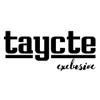Josh White is principal and creative director of New York City-based brand and design agency OffWhite Co.
Selling to an empowered consumer base is challenging business. Never before have we seen a generation so laser focused on eating healthy, whipping out their smartphones to read up on reviews, search ingredients or find a company’s backstory.
So it’s not surprising that the trend of better-for-you is showing up in food packaging, not only reflecting what’s on the inside — in terms of gluten-free, non-GMO or organic ingredients — but also what’s on the outside. The need for food producers to deliver an on-brand message in a simple, clear and environmentally friendly presentation is stronger than ever.
In my firm’s role helping companies elevate their brand to gain consumer attention and trust, being at the cutting-edge of what’s next in food packaging is key. Here’s what we’re seeing as the top five packaging trends for 2020 and beyond:

Josh White
Sari Goodfriend
Eco-friendly: After years of talking about it, zero-waste, edible packaging is on its way. Imagine biting into an empty carton or swallowing a water bottle instead of recycling it. It sounds far-fetched, but the era of having your food and eating the wrapper too is becoming reality. Food industry leaders are already offering edible wrappers for sandwiches, cookies, ice cream bars and other individually wrapped foods made from natural materials such as potato, rice paper, seaweed, wax-coated sugar and tomatoes. Other eco-friendly advances to watch for include soy-based inks, biodegradable plastics and compostable materials.
Transparent: The push to be clear and upfront about food ingredients will continue into 2020, both in on-package wording and packaging structure, with the use of see-through or translucent materials growing. The more that companies address consumer demand for transparency about what they do and how they make their products, the more we’ll see clear packaging that removes the guesswork out of what’s inside. Not surprisingly then, research shows that when given a choice, consumers will choose transparent packaging over opaque packaging.
Sophisticated: Brand trust is everything to consumers. Once you’ve lost their trust, you’ve most likely lost them as customers. Interestingly, with the notion of reliable, premium food products on the rise, brands are increasingly shifting their strategy by borrowing design language typically found in what are considered safer, trusted or reliable industries, such as finance, real estate and law. For example, there is a huge uptick in the use of bold serif typography in logomark design, headline copy and even body copy. This approach was taboo only a few years ago as brands positioned themselves as more trendy, as opposed to aligning with seemingly uncool, stale industries.
Simple: In today’s high-tech, instantaneous world, consumers don’t have time to digest reams of information — nor do they want to. In response, we’re starting to see food brands cater to the “tell me what I need to know quickly” trend by latching onto simple, bold colors, big type and one-word brand names, with messages that are catchy and to the point. A leading whole food protein bar, for example, is taking an aggressive stance on keeping it simple by only listing its food ingredients in large font on the front of its packaging, followed by “No B.S.”
On-brand: The coming year will also see a growing trend toward communicating a brand story that shows up in all of a company’s brand assets, as consumers gravitate towards products that match their lifestyle and dietary choices. Defining an over-arching brand archetype — such as “unconventional rebel,” ”‘friendly neighbor” or “knowledgeable sage” — will increasingly influence all of a company’s brand touchpoints, starting with packaging. As an example, a leading producer of grass-fed, organic dairy products depicts its delicious yogurt product lineup with tasty fruits nestled in a bed of meadow grasses. The same bed of grass is extended to all of the company’s milk offerings, incorporating actual portrait photography of dairy cows from its farm, versus faking it with stock photos of cows. This consistency helps underscore a trustworthy-source, natural and fresh positioning across all product offerings — current and future.












